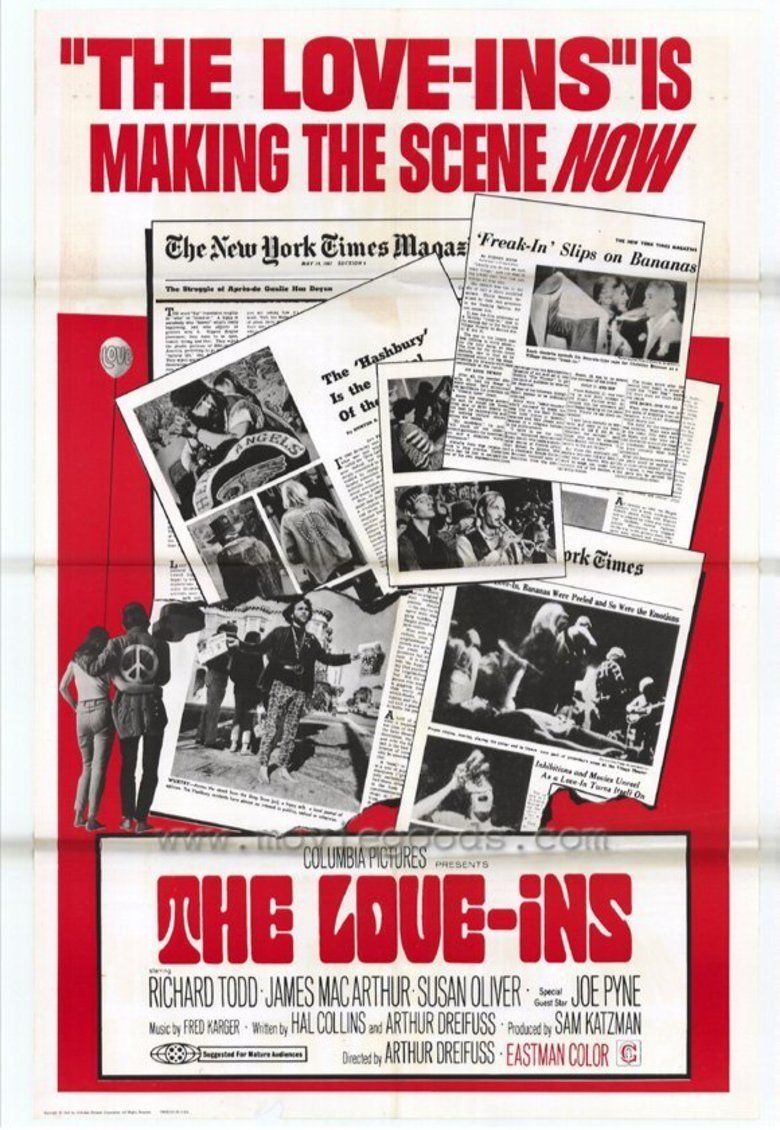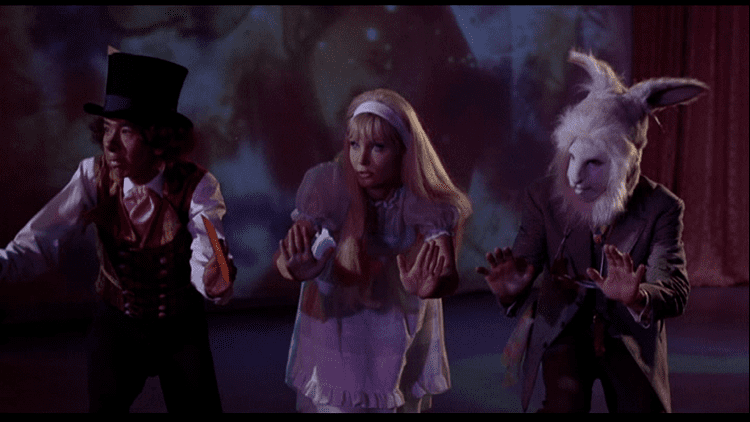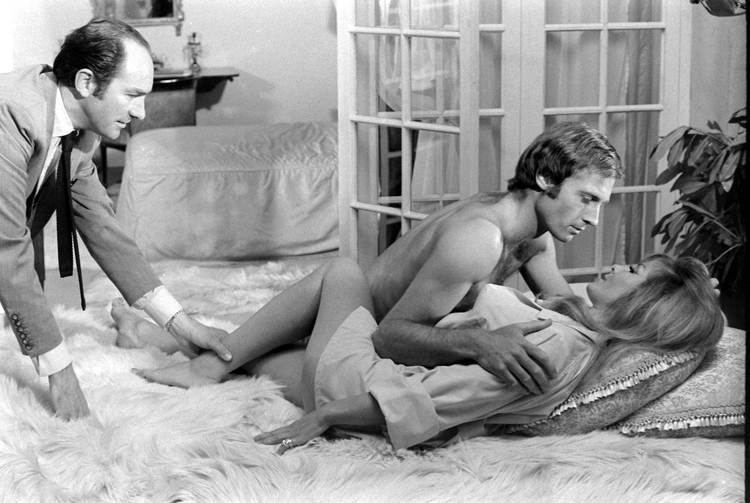The Love Ins
4.4 /10 1 Votes4.4
Music director Fred Karger Country United States | 4.2/10 IMDb Genre Drama Duration Language English | |||||||||||||||||||||||||||||||||
 | ||||||||||||||||||||||||||||||||||
Release date 1967 (1967) Screenplay Arthur Dreifuss, Hal Collins Cast (Dr. Jonathan Barnett), (Larry Osborne), (Patricia Cross), (Elliott), Carol Booth (Harriet Henning)Similar movies Psych-Out (1968), Easy Rider (1969), Hallucination Generation (1966), Sam Katzman produced The Love-Ins and Riot on Sunset Strip, The Trip (1967) Tagline THE HIPPIES AND DIGGERS ARE HERE! WITH THE WAY-OUT EXCITEMENT THAT'S TURNING-ON AMERICA TODAY!... | ||||||||||||||||||||||||||||||||||
College students Larry (James MacArthur) and Patricia (Susan Oliver) run their own radical, grassroots newspaper, which gets them kicked out of school. Dr. Jonathan Barnett (Richard Todd), their cool professor, quits his job to protest the students expulsion. Impressed by Jonathans gesture, the students invite him to live in their communal hangout, where he begins a steady diet of LSD and is hailed as a guru. But, when he starts to believe he really is a spiritual leader, a cult is born.
Contents

The Love-Ins is a 1967 exploitation film about LSD that was directed by Arthur Dreifuss. The film is loosely based on the 1960s American figure, Timothy Leary and represents the 1960s San Francisco scene, particularly that of the Haight-Ashbury district. The plot basically centers on a Timothy Leary type figure becoming the head of a cult-like following of hippies who all enjoy the effects of LSD. The production seems to be a typical representation of the producer Sam Katzmans work. The film featured a number of different musical acts popular at the time. The themes dealt with drug use and martyrdom. The film was generally poorly received with a few exceptions.

It's the 60s and every "love child" is in search of a guru to follow and lead them to enlightenment! A group of young hippies follows a much older man and soon he turns himself into their "guru" leading them astray and having his way with the young women in his "flock".
Plot
Patricia Cross and her boyfriend Larry Osborne, two students in a San Francisco school, become expelled for the publication of an off-campus underground paper. As a result, a philosophy professor, Dr. Jonathon Barnett, resigns his teaching position and decides to become an advocate for the counterculture youth movement and, specifically, the use of LSD. The hippies of the Haight-Ashbury district (including Larry and Patricia) first see him as a hero and then as something even more. Dr. Barnett even makes an appearance on the Joe Pyne TV show to voice his support of the hippie community and the use of LSD.
One scheming young man sees the opportunity to build Dr. Barnett as the head of a cult centered on the use of LSD. He hopes to earn profit from the users, Dr. Barnetts speeches known as "happenings," and their lifestyles. At a massive LSD-fueled dance, Patricia begins to have a bad trip which leads to an argument between her and Pat, ultimately splitting the couple up.
After Patricia realizes that shes pregnant, Dr. Barnett advises her to have an abortion, ultimately leading to Patricia attempting suicide. However, Larry saves her and makes the destruction of Dr. Barnetts cult his primary objective. Larry shoots Dr. Barnett from the crowd at one of his massive speeches. As another hippie in attendance calms the audience and Elliot sees his new leader for their cult-like organization, Larry realizes that his assassination of Dr. Barnett simply made him a martyr for the hippie movement.
Cast
The cast incorporated a number of current musical acts, real-life news figure Joe Pyne, actors, as well as extras who were actually from the Haight-Ashbury district at the time.
Actress Susan Oliver, who portrays the main character Patricia Cross, was disillusioned by the film due to its serious subject manner and the exploitation style in which it would be produced. She said, "Id turned it down flat at first, since the script was a trivialization of the whole Timothy Leary, flower-child, hippie scene then going on." However, producers and friends involved in the picture promised her that the topic would be done tastefully. Later, she realized it was just an exploitation and cried at the wrap party.
Production
Columbia Pictures released the film in 1967. Sam Katzman produced the film. According to Jeff Stafford, Katzman had made a name of making cheap exploitations films in either popular genres or in relation to popular fads of the time.
The term "Love-Ins"
"Love-in" is a name given to a gathering in the promotion of love for the enjoyment of participants either personally or in relation to social activism. In the context of the title, it refers to the psychedelic and social activism conducted by Timothy Leary who in the film is represented by the character Dr. Barnett whose philosophy is "Be more. Sense More. Love more."
Music
The film featured a number of psychedelic rock bands at the time. The garage band The Chocolate Watch Band made an appearance in the film as well as contributing music. The film also featured 1960s bands, The UFOs, Donnie Brooks and the New Age Group. Hollywood music director and composer Fred Karger also contributed original music for the film.
Although not a musical, the film does feature a large musical sequence in which a main character, Patricia Cross, has a bad LSD trip and goes into an Alice in Wonderland themed sequence. Cross imagines that shes Alice and meets men dressed in White Rabbit costumes as well as other representations of characters from Lewis Carrolls story over the course of a lengthy free-form disco musical sequence.
Themes
The film deals with many themes in tune with 1960s counterculture. One theme throughout the film deals with the aspect of the Haight-Ashbury district and its druggie counterculture, with Dr. Barnett as the films representation of Timothy Leary. Like Leary, Barnett endorses an LSD lifestyle. As Barnett says in the film, "LSD opens up new vistas and experiences to those that take it, I believe that every healthy person should try it. This is a way of life: Be More. Sense More. Love More." The film also showed the downfall of certain individuals as the result of such a lifestyle, in particular with the films treatment of its protagonists Larry and Patricia. Other themes include the creation of martyrs, reflected through the final act in which Larry thinks he has destroyed the head of this cult-like following only to find a ready replacement in another hippie from the organization.
Reception
Many critics dismissed the film as "a typical exploitation film." However, a few notable exceptions exist. Variety magazine called it a "good exploitation film of San Francisco’s hippie movement…a solid, if standard story, fringed in fine style with love-ins and hippie happenings…art direction is slick and colorful."
References
The Love-Ins WikipediaThe Love-Ins IMDb The Love-Ins themoviedb.org
